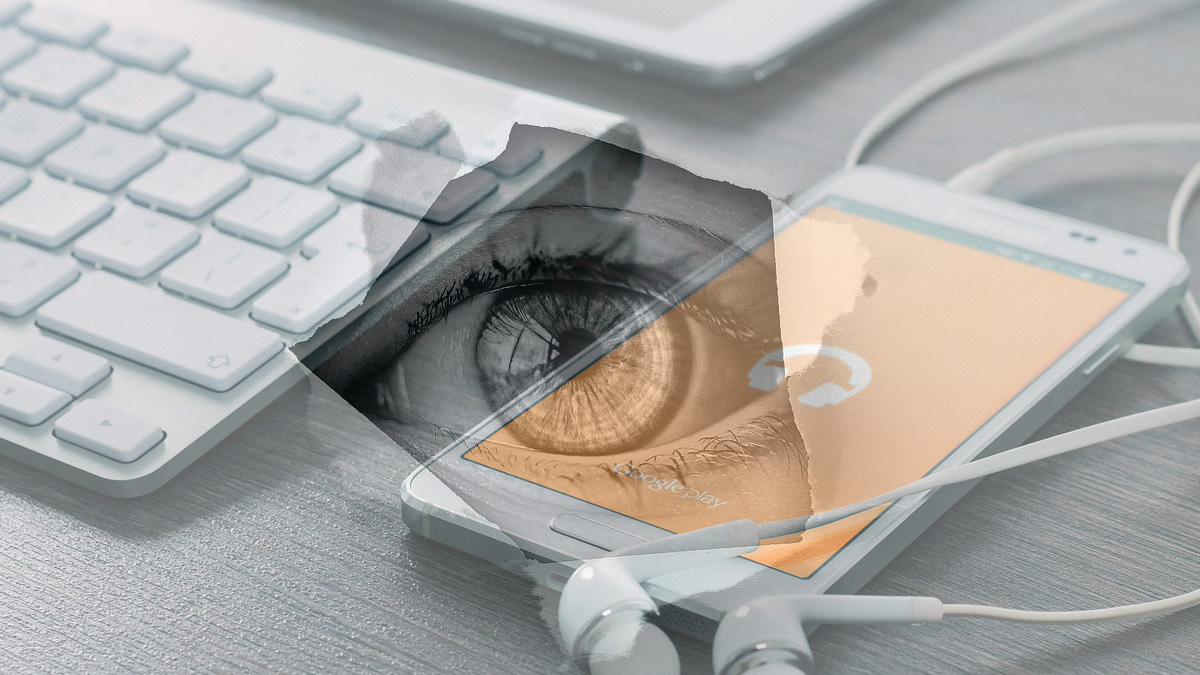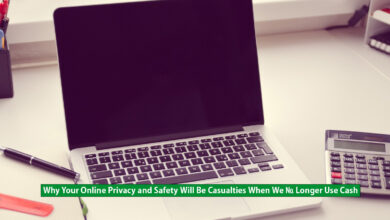Beware! Your devices are spying on you – how to protect yourself

They’re here, they’re there, and they’re everywhere. Your devices are recording your every move, listening to your every word, and tracking your every interaction. You invited them in. You gave them access to your life through cell phones, wearables, webcams, and anything that connects to the Internet. It’s a fascinating thought, but also a bit scary.
The Allure of Convenience
In today’s world, it’s hard to resist the convenience these devices offer. They streamline tasks, connect us with loved ones, and even help manage our homes. But at what cost? Each time you say “yes” to a new gadget, you might be saying “yes” to surveillance.
The Internet of Things (IoT)
These devices are gateways to the Internet of Things (IoT). They promise to make our lives easier, but they also open the door to potential risks. Smart speakers, fitness trackers, and even smart TVs can collect data on your habits, preferences, and routines.
Common Devices to Watch
- Smart Speakers: They listen for your commands, but they could also be listening to your conversations. Consider disabling the microphone when not in use.
- Wearable Tech: Fitness trackers monitor your physical activity and health metrics. While this data can be useful, it’s also sensitive. Check privacy settings regularly.
- Webcams: Many laptops and smart devices come with built-in cameras. If you’re not using them, cover the lens to prevent unwanted viewing.
- Smart Home Devices: Thermostats, lights, and even refrigerators can be connected to the internet. They can learn your habits, but they can also share that information with third parties.
Recognizing Your Exposure
As you embrace these technologies, it’s crucial to recognize your exposure. Here are a few tips to safeguard your privacy:
- Review Permissions: Regularly check what permissions apps and devices have. Limit access wherever possible.
- Use Strong Passwords: Protect your accounts with strong, unique passwords. Consider using a password manager.
- Update Regularly: Keep your devices and apps updated to protect against vulnerabilities.
- Educate Yourself: Stay informed about how your devices work and what data they collect.
The Hidden Risks of Modern Baby Monitors
Baby monitors are designed to provide peace of mind for parents. They allow us to keep an eye on our little ones while we go about our daily routines. With the rise of video baby monitors, we can now see our babies from anywhere. This technology is undeniably cute and offers a sense of security. But is it all sunshine and rainbows?
Imagine being at work and checking in on your baby through your smartphone. You can see if the sitter has put them to bed or if they’re simply dreaming. This ability to monitor our children remotely is a game-changer. Yet, it also brings potential risks that we must acknowledge.
Security Concerns
While baby monitors can be comforting, they also open the door to security vulnerabilities. How strong is the password protecting your device? Hackers can exploit weak passwords and gain access to your video feed. They could watch your baby and learn your family’s routines. This is a frightening thought for any parent.
To protect your family, ensure that your router and modem are secure. Use strong, unique passwords. Regularly update your devices to patch any security flaws. Taking these steps can help safeguard your home against unwanted intrusions.
The Evolution of Home Security
Just as baby monitors have evolved, so have other home security devices. Remember when the only way to secure your garage was with a metal key? Today, we can lock and unlock our homes with a tap on our smartphones. This convenience is appealing, but it comes with its own set of risks.
If you can control your garage door remotely, so can hackers if your system isn’t properly secured. A staggering 73% of adults fall victim to cyber crimes each year. It’s not hard to imagine someone exploiting these vulnerabilities to break into a home.
Protecting Your Home
To keep your home safe, take proactive measures. Change the default passwords on your smart devices. Enable two-factor authentication whenever possible. Regularly check for software updates to ensure your devices are protected against the latest threats.
The Hidden Dangers of Kinect for Xbox: What You Need to Know
Kinect for Xbox is more than just a gaming accessory. It transforms the way we interact with our consoles. With voice commands and facial recognition, it makes gaming feel immersive and personal. But beneath this shiny exterior lies a darker reality.
The Power of Kinect
Kinect allows for seamless communication. You can chat with friends, join video calls, and even let the device recognize you for quick sign-ins. It’s convenient. However, this convenience comes at a cost.
Privacy Concerns
When you invite strangers into your gaming space, you’re not just sharing pixels on a screen. Kinect collects data. Your face, voice, and even the layout of your living room can be captured. This data is not just for gaming—it can be accessed by agencies like GCHQ and the NSA.
Imagine a treasure trove of information being compiled from your living room. The NSA has been gathering data from Kinect for over a decade. This includes images and audio, all linked to your IP address. It’s not just about gaming; it’s about surveillance.
What You Can Do
- Secure Your Network: Use strong passwords and consider a VPN. Protect your personal space from prying eyes.
- Limit Kinect Usage: Turn off your console when not in use. This simple step can help minimize data collection.
- Be Mindful of Sharing: Think twice before inviting strangers into your gaming sessions. Your space is more than just a backdrop; it’s a potential data mine.
The Smart TV: Convenience or Invasion of Privacy?
The evolution of television has been remarkable. From bulky boxes with dials to sleek smart TVs that respond to our voices, the journey has been fascinating. But with great convenience comes great concern.
Voice Activation: A Double-Edged Sword
Smart TVs now offer voice command features. You can change channels, search for shows, or control volume without lifting a finger. It’s convenient and can make your viewing experience seamless. However, this technology raises significant privacy issues.
Eavesdropping Concerns
While I can manage a traditional remote, I’m wary of letting my TV listen in on my family. Smart TVs are designed to respond to specific keywords. Once they hear these triggers, they become “aware.” But what happens next?
When you use voice commands, your data is often sent to third parties. This means your personal information could be shared with companies you may not trust. Do you really want your conversations recorded and analyzed?
The Risk of Hacking
The stakes are even higher. Imagine a hacker gaining access to your smart TV. They could potentially listen to your private moments. It’s a scary thought, and it’s essential to consider the security of your devices.
Protecting Your Privacy
Before purchasing a smart TV, do your homework. Investigate the security and privacy settings available. Many models offer options to limit data collection and control what information is shared.
Here are some steps you can take:
- Review Privacy Settings: Familiarize yourself with your TV’s privacy options. Disable features that you don’t need.
- Limit Voice Activation: If you’re concerned, consider turning off voice recognition entirely. You can always use the remote.
- Stay Updated: Regularly update your TV’s software. Manufacturers often release security patches to protect against vulnerabilities.
Final Thoughts
Smart TVs are a testament to how far technology has come. They offer incredible features that can enhance our viewing experience. But at what cost?
As you enjoy the convenience of a smart TV, remember to prioritize your privacy. Balance the benefits with the potential risks, and make informed choices. Your home should be a sanctuary, not a surveillance zone.
The Evolution and Importance of Webcams: A Double-Edged Sword
Webcams have come a long way since their inception. Once considered a luxury, they are now essential tools for communication. In today’s fast-paced world, every businessperson is expected to have one.
A New Era of Communication
Before webcams and video conferencing, meetings often required international travel. Think about the time, money, and energy spent on those brief encounters. Now, with just a double-click, we can connect face-to-face with anyone, anywhere in the world. This convenience has transformed how we work and interact.
Webcams allow for real-time collaboration. They enhance communication by adding a personal touch that emails and phone calls lack. You can read body language, see facial expressions, and engage more effectively. This technology has made remote work not just feasible, but productive.
The Dark Side of Connectivity
However, this convenience comes with a significant risk. The same devices that facilitate our meetings can also be exploited by hackers. Imagine this scenario: you leave your computer on, your webcam active, and you get undressed. Unbeknownst to you, a hacker has gained access. You are being watched.
This is not just a hypothetical situation. There are countless stories of individuals who have been victims of webcam hacking. Sometimes, it’s voyeurism. Other times, it’s malicious intent. The invasion of privacy can be devastating, leading to emotional distress and reputational harm.
Protecting Yourself
So, how can you protect yourself? The first step is awareness. Always assume that your webcam could be compromised. Here are some practical tips:
- Cover Your Webcam: Use a physical cover or tape when not in use. It’s a simple yet effective barrier.
- Secure Your Devices: Ensure that your computer’s operating system and software are up to date. Regular updates can patch vulnerabilities that hackers exploit.
- Use Strong Passwords: Protect your devices with strong, unique passwords. Consider enabling two-factor authentication for an added layer of security.
- Be Cautious with Links: Avoid clicking on suspicious links or downloading unknown software. These can be gateways for hackers.
- Turn Off Your Webcam: When you’re done with a video call, turn off your webcam and shut down your device if possible. This minimizes the risk of unauthorized access.
Conclusion
Webcams have revolutionized the way we connect and communicate. They offer immense benefits, making remote work and virtual meetings possible. However, with great power comes great responsibility. Stay vigilant and protect your privacy. By taking simple precautions, you can enjoy the advantages of webcams without falling victim to their potential dangers. Stay safe and connected!
Staying Safe in a Tech-Driven World: A Guide for the Cautious User
In today’s digital age, it’s natural to feel a bit paranoid. As a risk manager, I constantly question everything. This mindset helps me dissect, plan, and mitigate potential threats. While manufacturers of listening devices have a moral duty to protect their users, you can also take charge of your own safety. Here’s how to safeguard yourself against potential risks.
1. Use Complex Passwords
Your first line of defense is a strong password. Avoid simple combinations. Instead, use a password generator. Websites like Dashlane.com and Keepass.info offer free tools to create complex passwords. This adds a layer of security to your accounts and personal information.
2. Know Your Vendor
Research is key. Understand who makes your devices. Look into their security protocols and privacy settings. Knowing your vendor can help you make informed choices about what to trust.
3. Stay Informed
Technology evolves rapidly. Keep up with news about the devices you own. Follow updates and patches that address security vulnerabilities. This knowledge can help you stay one step ahead of potential threats.
4. Consult Experts
Don’t hesitate to reach out for help. An IT or home security expert can provide valuable insights. They can help you close any open windows or portals that might expose you to risk.
5. Turn Off Devices
When you’re done using a device, turn it off. This simple action can prevent unauthorized access. For example, if you have a baby monitor, avoid using its online features. This way, you keep your routine private.
6. Be Smart and Cautious
The online world can be dangerous. Stay vigilant and be smart about your usage. With proper planning, you can identify risks and work to mitigate them.
Conclusion
Feeling paranoid? It’s okay. Being cautious is a sign of awareness. By following these steps, you can protect yourself in a tech-driven world. Remember, knowledge is power. Stay informed, stay safe.







